History of the Patek Philippe Nautilus, Part 3 – The Modern Days (2006/present)
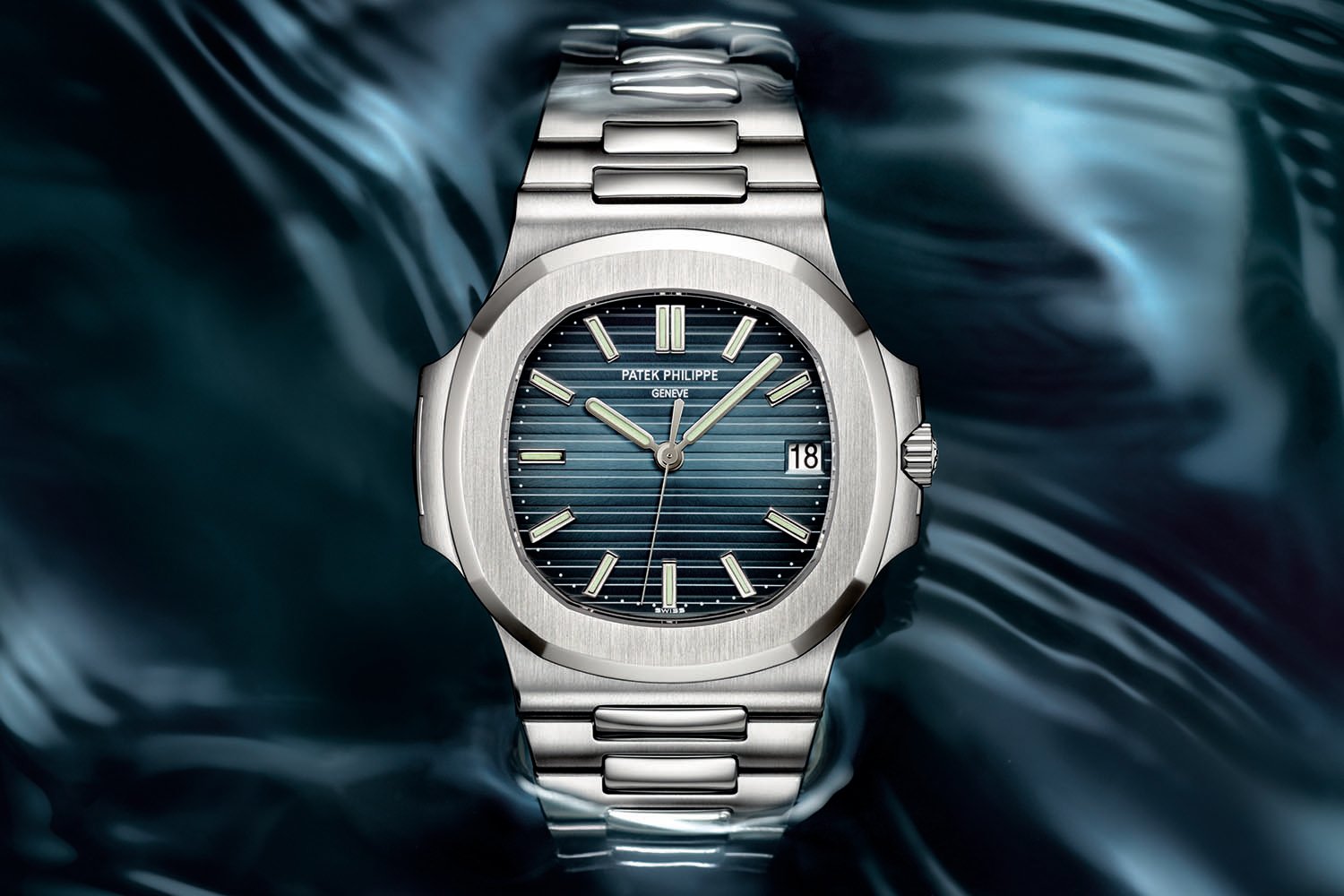
Every story has a beginning, a middle and there’s an end, and today will be the third and final installment of our “History of the Patek Philippe Nautilus“. After a close look at the icon that started it all, the emblematic Nautilus Ref. 3700, after looking at the evolution of a model into a proper collection, from 1980 to 2006, it’s time now to look at modern ages – an era that started in 2006, for the 30th anniversary of the Nautilus, with the comeback of the “Steel Jumbo”, the addition of a chronograph and an overall facelift of the collection, to shape the Nautilus that we know today. Numbers like 5711, 5980 or 5990 will be mentioned, and some watch-lovers already know what it’s going to be about. Here are the modern days of the Patek Philippe Nautilus.
Patek Philippe Nautilus History – Timeline 2006-2016 – click to enlarge
When, at the Monochrome-Watches redaction, we started to think about publishing a complete History of the Patek Philippe Nautilus, there was immediately a clear distinction in the timeline. 3 strong eras could be seen and this explains the 3 parts of this – we hope – exhaustive retrospective. Every good story must have its legend and, in the case of the Nautilus, what a legend it was to start with, the iconic (an understatement…) reference 3700. Then, after this first model, there was a clear move from a unique model to a collection, which can be seen from 1980 to 2006, with the addition of mid-size watches, ladies’ versions, and, noticeable point, the implementation of complications. However, in the Nautilus’ timeline, an important date has to be enlightened: 2006, or the 30th anniversary of this watch. The Geneva-based Maison could have introduced commemorative editions and stick to their existing collection. However, they had been working hard and instead, Patek came with an entire new collection. Every single watch you knew before was replaced or strongly updated. And since this date, the Nautilus has constantly evolved, to reach 2016 and the 40th anniversary editions.
The 30th anniversary of the Nautilus and the 2006 collection
From left to Right – Nautilus 5711/1A (time-and-date “steel jumbo”) – Nautilus 5712/1A (moon-and-date) – Nautilus 5980/1A (chronograph) – Nautilus 5800/1A (mid-size)
In 2006, Patek Philippe marked the 30th anniversary of the Nautilus in superb manner. Instead of having simply a limited edition of the watch, they redesigned (slightly, not too much) the entire collection and launched no less than 4 new watches. While the moon-and-date version – ex. 3712, now 5712 – was kept (even if updated), and the mid-size version, ex. 3800, now 5800, was extended, the 2006 collection was an immense move, as it introduced two models that later will become emblematic: the 5711, which sounded like the proper comeback of the “steel jumbo”, a time-and-date version, somehow the modern interpretation of the 3700 (something that was already experienced, in a more luxurious way with the 3711G) and the arrival of a first chronograph in the collection, with the ref. 5980. And the best comes with the fact that these watches were all launched straight away in steel and not first in precious metals as we see usually in some other brands.
2006 – The comeback of the “Steel Jumbo”, the Nautilus 5711 (and a comparison with the 3700)
While 4 new watches were launched for the 2006 Edition of Baselworld, and subsequently for the 30th anniversary of the Patek Philippe Nautilus, one certainly is more important than the rest, as we’re talking about the iconic “steel jumbo” or time-and-date version, reference 5711/1A. This watch best sums-up what the Nautilus is for collectors: a sleek and bold sports watch, with blue dial, stainless steel case / bracelet and a simple display… just like the 3700 was. When compared, you immediately recognize the design of Gerald Genta and you can see how faithful the 5711 is, compared to the icon born in 1976. However, on closer inspection it reveals a rather strong evolution, mainly in the details.
30 years of evolution – the 1976 Nautilus 3700/1A (left) and the 2006 Nautilus 5711/1A
As said, the overall look and concept have been perfectly respected with the Nautilus 5711. The basics are here: stainless steel octagonal case, two lateral hinges, an integrated bracelet, a mix of brushed and polished surfaces, a simple display on a grooved blue dial… Face to face, both are extremely close. However, you can also spot differences and see that there’s a slight modern feel in the 2006 version of the Nautilus Jumbo. Here is an exhaustive list of the evolutions:
- Case: the 5711 has a 3-part case (central container, bezel, caseback – see image below). The 3700 had a monobloc case, with central container / caseback module and bezel. The 5711 also features a sapphire caseback (screwed) which make the movement visible. Water resistance is 120m on both watches.
- Hinges / ears: probably the main evolution in terms of design. On the 5711, the hinges / ears are slightly curved (following the curvature of the bezel) while straight on the 3700 (as all the watches from the 1976 – 2006 period)
- Size: the 5711 has grown a bit, to 43mm (ear to ear) and 40mm (from 10 to 4), while the 3700 was 42mm. Proportions are still the same, with a rather “fat” bezel.
- Thickness: The 5711 is slightly thicker, at 8.3mm versus 7.6mm for the 1976 edition. This is due to the different construction of the case, the sapphire caseback, the new movement and the new display. Still, the Nautilus is a thin piece and has kept its vocation of luxury, high-end sports watch.
- Crown: large screw-down crown on the 5711. Smaller on the 3700.
- Bracelet: The 5711 has central links that are rather flat, while the 3700 had rounded central links. This evolution greatly participates to the more modern feel you have when strapping on the 5711. Evolutions are also noticeable on the buckle, which used to be rather basic on the 3700 (a double folding blade) and now is a triple folding buckle on the 5711. The flip-lock piece on top of the buckle is maintained.
- Dial: Both have a blue dial, with horizontal grooves. However, the 5711 has a more electric blue tone and a stronger gradient finish. The grooves on the 5711 are also wider and deeper. The logo has a new font and is placed higher on the dial. Indexes are now bolder (filled with super-luminova instead of tritium) and hare shaped towards the edges of the dial, to follow the shape of the bezel. Hands are also lager on the 5711.
- Display: while the 3700 was a 2-hand time-and-date, the 5711 adds a central second hand – something that gives the indication of a new movement.
- Movement: the Nautilus 5711 has the in-house calibre 324 SC (for seconde centrale or central second), while the 3700 relied on the JLC-based calibre 28-255C. The new movement is modern – 4Hz frequency, Gyromax balance, Spyromax balance spring – with a nice finishing (Geneva seal and later Patek Philippe seal – introduced at Baselworld 2009), 35 to 45 hours of power reserve, automatic winding via central rotor… The movement of the 5711 is slightly thicker than the movement of the 3700 (3.3mm vs. 3.05mm), which result in the 5711 to be thicker (also because of the extra-space required by the central second, in-between the dial and the crystal).
An exploded view of the case of the Patek Philippe Nautilus 5711-1A, showing the more traditional 3-part construction.
Now that we have listed all the evolutions, we can argue about several facts. First of all, the Patek Philippe Nautilus 5711/1A is clearly faithful to its original ancestor, while being at the same time a huge step in modern times. When looked at on the wrist, the feel is naturally more qualitative (the watch feels heavier and more solid) and more “actual”, by being slightly bulkier. Once again, the evolution is subtle but the combination of a larger case (1mm), more pronounced color on the dial, with larger grooves and larger indexes and hands gives more robustness to the Nautilus, which definitely entered the 21st century, but not disruptively.
The evolution of the case’s architecture has somehow created a lukewarm feel on some hardcore collectors, as the monobloc case was part of the original concept. However, this move is understandable for several reasons: easier production process, easier assembly, easier maintenance when the watch arrives in after-sales. Once again, the watch had to make a few concessions to modernity.
The concluding word about the Patek Philippe Nautilus 5711/1A is that the watch has been an incredible success in terms of reactions from collectors and in terms of sales. This exact watch is almost impossible to find new in a boutique and the price for a used one is higher than the retail price. The “Steel Jumbo” Nautilus is a collectible item, whether vintage or new.
The Nautilus 5711 is now available on bracelet in steel with a blue dial (5711/1A-001), in steel with a white dial (5711/1A-011), in rose gold with a chocolate dial (5711/1R-001) and has been available on leather strap since 2007 and in gold, like for instance the 5711J (now discontinued). A rare platinum version on bracelet with electric blue dial (5711P) was also available on request (in a very limited production).
2006 – The update of the moon-and-date, the Nautilus 5712 (and a comparison with the 3712)
The moon-and-date version of the Patek Philippe Nautilus isn’t really a new watch, as a previous version, the 2005 Ref. 3712, was already in the collection. In this case, we are facing an update, which goes in line with the novelties introduced by the 5711. The new kid is now named reference 5712 and retains its slightly unbalanced and messy but oh-so charming display, featuring hours and minutes on the central axis, a small-second at 4:30, a date-by-hand with Moonphase at 7 and a power-reserve indicator at 10:30. Overall, the watch is visually the same as the 5711, sharing the same case and bracelet, the same shape for the hands and the indexes and the same color and grooves for the dial. What differs is the display and movement that goes alongside.
If compared to the short-lasting (one year only) ref. 3712-1A, the new Nautilus 5712-1A seems completely similar… but in fact, it has changed, mainly in the details.
- Case: the 5712 shares its case with the 5711, meaning a 3-part construction with sapphire caseback (vs. monobloc with sapphire caseback for the 3712), Water resistance is 60m on both.
- Hinges / ears: just like introduced on the time-and-date 5711, the case now shows curved ears instead of straight ones
- Size: the 5712 has a slightly larger diameter at 43mm versus 42mm for the 3712 (from ear to ear), and 40mm from 10 to 4.
- Thickness: The 5712 is a tiny bit thicker, at 8.52mm versus 8.37mm for the 2005 edition. This is due to the different construction of the case.
- Crown: large screw-down crown on the 5712. Smaller push-piece on the 3712.
- Bracelet: The 5712 has flat central links, while the 3712 had rounded central links. Both share a modern triple folding buckle.
- Dial: Both have the signature gradient blue dial, with horizontal grooves. It’s difficult to judge on photos (official or not) if the color is exactly the same, but it seems very close. Some differences can be noticed though. First, the tiny index at 7, below the date ring, has been removed on the 5712. Then, the index at 6 is cut on the 5712, while rectangular on the 3712. The major update concerns the moon-and-date sub-dial, which is now larger on the 5712, with taller numerals for the date, and all placed in the reading direction (while concentric on the 3712). All the hands are equal however.
- Movement: that’s where the Patek Philippe Nautilus 5712 evolves less, as it still retains the micro-rotor ultra-thin calibre 240 PS IRM C LU (for petite seconde, indication de réserve de marche, calendrier et lune – small second, power reserve indicator, date and moon). The only noticeable evolution came in 2009 with the adoption of the Patek Philippe Seal, but not when the model was introduced, as still under the Geneva seal at that time.
Apart from the steel version of the moon-and-date Nautilus (ref 5712-1A), Patek also introduced the same year a pink gold version, the Ref. 5712R. Even if we’re not going to cover in this retrospective all the versions of each new model, the 5712R is important as it was the first Nautilus to come on the leather bracelet we know today on this model, meaning that the watch keeps its case intact and even feature the first central link of the metallic bracelet, on which the leather strap is attached. Such combination can still be found on most of the Nautilus editions.
2006 – The first chronograph of the collection, the Nautilus ref. 5980
Until 2006, the Patek Philippe Nautilus had seen some evolutions and the implementations of several complications. However, all of them have been displayed complications, in addition to the time, but none were related to a timing function. We’ve seen the winding zone indicator (IZR for Indication de Zone de Remontage) on the ref. 3710 and later the moon, date, small second and power reserve on the 3712. In 2006, Patek adds to the Nautilus a complication that goes entirely in the concept of luxury sports watch; a chronograph. It was named ref. 5980 and it features the ingenious and modern calibre CH 28-520. It was in 2006 Patek’s first ever self-winding chronograph developed and manufactured in-house (at that time). This calibre was launched in two versions: an annual calendar version, in the ref. 5960P and for the Nautilus, Patek chose to have a simpler display, without the annual calendar function, with a simple date at 3. However, the chronograph mechanism, the base calibre and the display of the elapsed time are the same.
The Nautilus 5980 relies on the same 3-part architecture as the 5711 and 5712, with an overall same design. However, the case is slightly larger at 40.5mm (from 10 to 4, instead of 40mm), and chronograph obliged, it features 2 pushers at 2 and 4. It is water resistant to 120m, just like the 5711 and has a sapphire caseback. The dial, which still has its gradient blue color, the horizontal grooves, the same indexes and hands, remains quite sleek, thanks to a rather specific display. On the contrary of standard chronographs with two or three sub-registers (small second, 30-minute, 12-hour), the Nautilus 5980 has one single co-axial sub-dial for the elapsed minutes and hours. The Nautilus Chronograph 5980 doesn’t feature any running second.
The Calibre CH 28-520 C that powers the Nautilus 5980/1A is a modern, complex and innovative piece of haute horlogerie. We’re talking about integrated architecture, with automatic winding (to go in line with the sporty vocation of the watch), with column-wheel, vertical clutch and Patek’s usual innovations (Gyromax, Spyromax…). The power reserve is between 45 and 55 hours. The movement is finished to high-standards (Geneva seal and later Patek Philippe Seal).
Lifestyle photo of the 5980 (credits Kristian Haagen)
Due to the addition of the chronograph function and the movement that goes with it, the Patek Philippe Nautilus 5980 is slightly bulkier than the time-and-date or the moon-and-date versions. It is thicker too, at 12.16mm. However, compared to some other luxury sports chronographs, its proportions remain relatively easy on the wrist. Note that the steel 5980 is now discontinued. Several other versions have been launched, including the 5980/1R (rose gold, bracelet, gradient black dial), the 5980/1AR (rose gold and steel, bracelet, blue dial) or the 5980R (rose gold, leather strap, brown dial). These 3 are still in collection.
2006 – The redesigned mid-size, the Nautilus Ref. 5800
While up until now we’ve been looking at the 3 icons of the modern Nautilus collection (5711, 5712 and 5980), another watch was part of the 30th anniversary collection, the renewed mid-size Nautilus, a.k.a reference 5800. It was the successor of the long-lasting reference 3800. The concept is the same as it used to be in the past: a watch extremely close to the “steel jumbo” in design, proportions and finishing, just with a smaller case, to answer the demand of some collectors with a smaller wrist, or those looking at something more understated. Utterly Nautilus in the design, yet as interesting as the 5711, the Nautilus mid-size 5800 is providing a slightly different feel on the wrist.
As said, the Patek Philippe Nautilus 5800 is the modern edition of the previous ref. 3800 – which was in the collection from 1981 until 2006. It follows the same evolution done by the 5711, with more modern touches here and there, improved mechanics but still the same overall design, inspired by the iconic 3700. The mid-size Nautilus, with this 5800, has grown a bit, going from 37.5mm on the 3800 to 38.4mm on the 2006 edition (measured from hinge to hinge, compared to the 43mm of the jumbo 5711). This gives an approximate diameter of 35.0mm (from 10 to 4), thus an already respectable size, however easy on the wrist and usable by most. No surprise, the case is water resistant to 120m. However, what is remarkable here is that Patek chose to keep the monobloc construction, with the sapphire caseback integrated into the central container (and not screwed on top of it), meaning that the movement was still mounted by the dial side.
The design and execution goes in line with the rest of the 2006 collection: curved hinges, larger crown, flat central links on the bracelet, bolder hands and indexes, slightly more “electric” blue for the gradient dial, deeper grooves, a 3-hand display (which was already the case on the 3800)… So to say, a reduced 5711. One Next to each other, these two differ only by from diameters and movements. The rest is almost equal.
Mechanically, the Patek Philippe Nautilus mid-size 5800 still relies on an older version of the ultra-thin, central rotor movement of Patek, the in-house Calibre 330 SC, with a 3Hz frequency. This movement however boasts the usual high-end finish of the manufacture, with Geneva Seal engraved on the bridges. This movement is quite thin (not as thin as the 324 SC though) with 3.5mm thickness, which allows the 5800 to measure 7.85mm. This watch was only available on bracelet, with the iconic blue dial, and is now discontinued. Unlike the 3800, which had been a huge success and had a long career (1981-2006), this modern mid-size Nautilus 5800 was probably not as popular amongst masculine collectors, who were looking for something larger (the trend for large watches was clearly established in 2006) and favored the 5711 instead. It has not been replaced since. The only 3-hand Nautilus for men in the collection is the 5711/1A.
2010 – The annual calendar version, the Nautilus Ref. 5726
In 2010, Patek Philippe continues the extension of the Nautilus collection by adding one of their signature complications, the annual calendar ref. 5726, an hybrid between the simple date window and the ultra-complex (maybe not relevant in a sports watch) perpetual calendar. This 5726 was the first time Patek offered this complication in a steel case. An annual calendar does take into consideration the duration of the months and automatically adjust the date, depending if the month is 30 or 31 days. The only thing that an annal calendar can’t do is the calculation of the month of February and the leap years, meaning that it will require one adjustment a years, to move from February 28th to March 1st.
This complication had been developed by Patek in the mid-1990s and first introduced in 1996, with the reference 5035. This watch, a classic in the collection and a conservative piece in terms of design, showed a dial with 2 sub-dials for the day of the week and the month, one for the 24h / day-and-night indication and a traditional window for the date. Elegant on a classical watch but probably not suitable for a sports watch like the Nautilus. This is why Patek decided to offer its icon a different display, based on 3 windows – one for the day of the week, one for the month, both at 12 and one for the date at 6. The watch retains the sub-dial at 6 with 24h indication and moon-phase display.
The Patek Philippe Nautilus Annual Calendar 5726 was first launched in 2010 on a leather strap only, with a stainless steel case and a gradient black dial. The case is basically the same as the 5711 and the other 2006 editions, with curved hinges and a diameter of 40.5mm (same as the 5980 chronograph). The annual calendar module is attached to the calibre 324, same ultra-thin central rotor calibre as the 5711.
This reference 5726 would later evolve, with new dial (white dial) and bracelet combinations (later available on steel bracelet). It is still in the collection.
2012 – The silvery-white dials for the Nautilus Ref. 5711, 5726 and 5980
In 2012, Patek made a rather steep evolution of the Nautilus, which for its large steel versions, mostly were available with dark dials. Since the 2012 edition of Baselworld, 3 of the versions are available with a silvery white dial. This concerns the “Steel Jumbo” 5711, the Chronograph 5980 and the annual calendar 5726. While being advertised as a sports watch since its inception in 1976, the Nautilus always kept a certain formal style with its dark dials. With the arrival of these bright dials in the collection, the watch grew in versatility and offers a sportier, less conventional look.
These white dials versions come with an evolution of the hands and indexes, which turned black instead of their usual polished metal execution. While changing color, the indexes are still made out of gold. The dials retain the design of the traditional blue / black editions, with horizontal grooves, however their color is now uniform and no gradient effect can be seen anymore.
Alongside the white dials, Patek also introduced in 2012 an evolution of the annual calendar ref. 5726, which can now be ordered on a steel bracelet, under the reference 5726/1A. The bracelet apart, the watch still has the exact same specifications, dimensions and look as the 2010 edition on leather strap.
2014 – The Travel Time Chronograph, the Nautilus Ref. 5990
While the Patek Philippe Nautilus collection still retains the gold (5980/1R-001) and two-tone (5980/1AR-001) and gold on strap (5980R-001) editions of the chronograph reference 5980, the stainless steel version of this model was to be replaced at Baselworld 2014 by a new version, the reference 5990, named Nautilus Travel Time Chronograph. While still based on the same mechanical architecture as the 5980, the new Nautilus 5990 adds a travel time complication and does surprise by the construction of its case.
In the heart of this Reference 5990 is the in-house integrated automatic chronograph movement of the Maison, the CH 28-520 C, used as a base to receive an additional dual time complication. The display of this 5990 is a mix between the 5980, with its unique sub-counter at 6 (however here indicating only the elapsed minutes and not being co-axial anymore, with both minutes and hours), and the travel time edition of the Aquanaut, the ref. 5164. However, while the display of the second-time zone is still done by a central hand, and while there are still day-and-night indicators for both the local and home time, the indication of the date has moved from 6 to 12, showing an evolution of the module.
The dimensions (40.5mm from 10 to 4) are on the other hand equal to the previous reference, the 5980 – the 5990 is just slightly thicker, at 12.53mm vs. 12.16mm. The dial, which retain the same groves, indexes and hands (with the addition of the 24h central hand), now features a gradient black color and gets rid of the window at 3 for the date (of course…). However, the main evolutions are not here, but mainly of the case and its construction.
The Patek Philippe Nautilus, whether vintage editions with monobloc case or modern versions, with 3-part case, have always been secured by screws on the corner of the hinges, closing the case. On the 5990, this is entirely different. First, the hinge at 9 doesn’t exist anymore, at least not as part of the case. It has been replaced by 2 pushers that allow the moving forward or backward of the 24h hand. Then, as you can see, the hinge at 3 doesn’t feature lateral screws anymore. This is why the pushers can impinge on the hinge and be integrated that close from the crown. Thus, while the overall design is retained, the Nautilus 5990 is a new sort of watch, differing drastically from the original construction wanted by Genta. This doesn’t make this watch an outcast – far from that – just a very modern interpretation.
2016 – The 40th anniversary editions of the Nautilus
The most recent evolution of the Nautilus has been introduced to the world on October 2016, for the 40th anniversary of the model. While some were expecting the same kind of announcement than in 2006 or a tribute watch in steel, with 2 hands and ultra-thin design, Patek went with 2 limited and ultra-high-end editions, the platinum Jumbo 5711/1P and the white gold chronograph 5976/1G.
The first one, the Nautilus 5711/1P, based on the classical 3-hand version, shares the same attributes: same movement, same dimensions, same display and same look. It differs from the steel version first by the material of the case and bracelet (Platinum 950 – which at Patek means a diamond incrusted in the bezel at 6), then by the color of the dial (an gradient electric blue), the embossed inscription at 6 and the hours indexes made from baguette diamonds. This version is limited to 700 pieces.
The second one, the Nautilus 5976/1G, is based on the normal chronograph (no travel time module) and is a sort of muscled reference 5980. Not only its case and bracelet are made from 18k white gold, but it is also larger than ever before on a Nautilus, with a diameter of 44mm (from 10 to 4) and a width of 49.25mm (from hinge to hinge). This can be seen as an answer to the growing demand for large and robust chronographs. The dial is, like the 5711P, electric blue, with embossed commemorative markings and diamond indexes. One difference with the 5980: the co-axial sub-dial at 6 has been reversed, as the minutes are now in the center and the hours on the periphery. This version is limited to 1,300 pieces.
The history of the Patek Philippe Nautilus summed up in one timeline
CLICK TO ENLARGE – HD FILE
This Part 3 of the “History of the Patek Philippe Nautilus” is part of a 3-part story:
- Part 1 – The Birth of an Icon, the 3700 (1976/1990)
- Part 2 – the evolution of a model into a collection (1980/2006)
- Part 3 – the modern versions – starting with the 30th anniversary editions in 2006, creating the actual collection
If you want to have further details about specific models of the Nautilus, please look at our previous articles:
- Patek Philippe Nautilus ref. 5980/1A Fully Reviewed
- Introducing review of the Patek Philippe Nautilus ref. 5990/1A Chronograph Travel Time
- Patek Philippe Nautilus ref. 5711/1R Rose Gold and chocolate dial
- Collector Kristian talking about his Patek Philippe Nautilus Chronograph 5980/1A with ultra-rare Tiffany dial
- Collector Kristian talking about his Patek Philippe Nautilus Annual Calendar 5726
- Collector Philipp talking about his Patek Philippe Nautilus 5711
- Introducing article to the Patek Philippe Nautilus 40th anniversary 5711/1P and 5976/1G


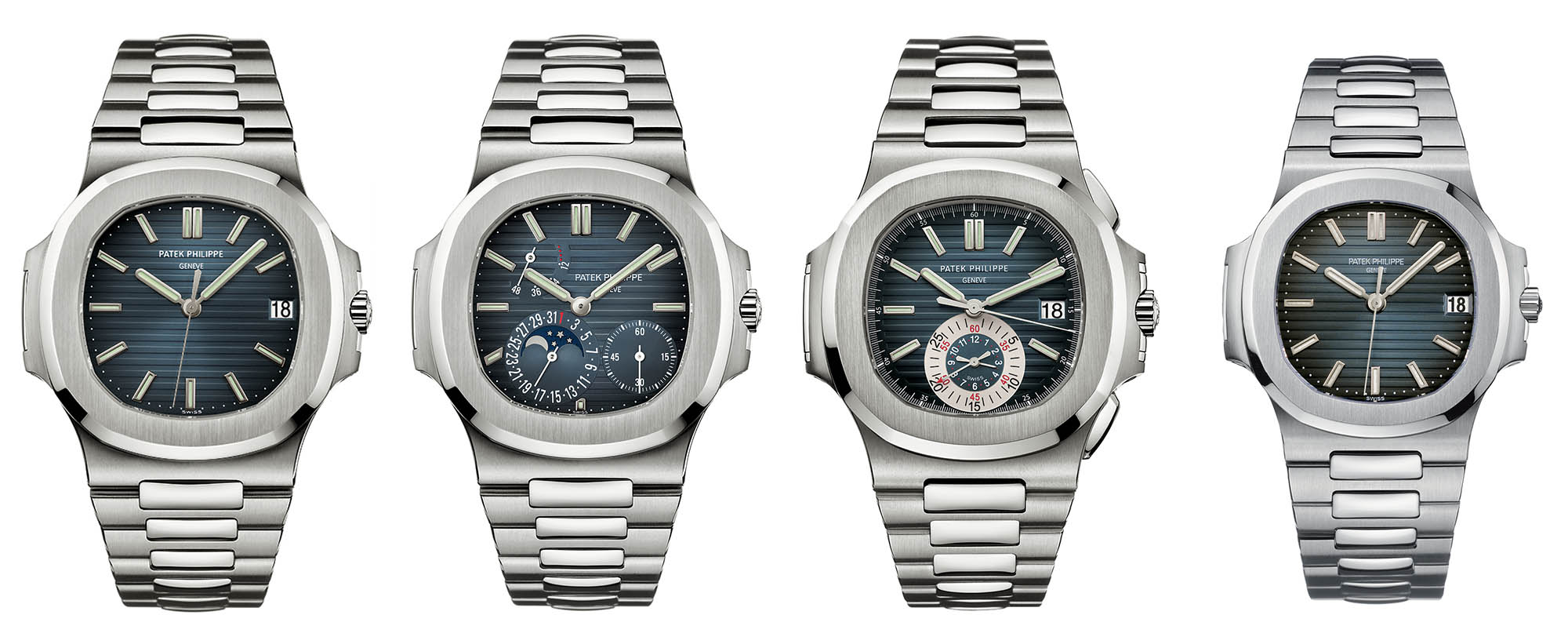
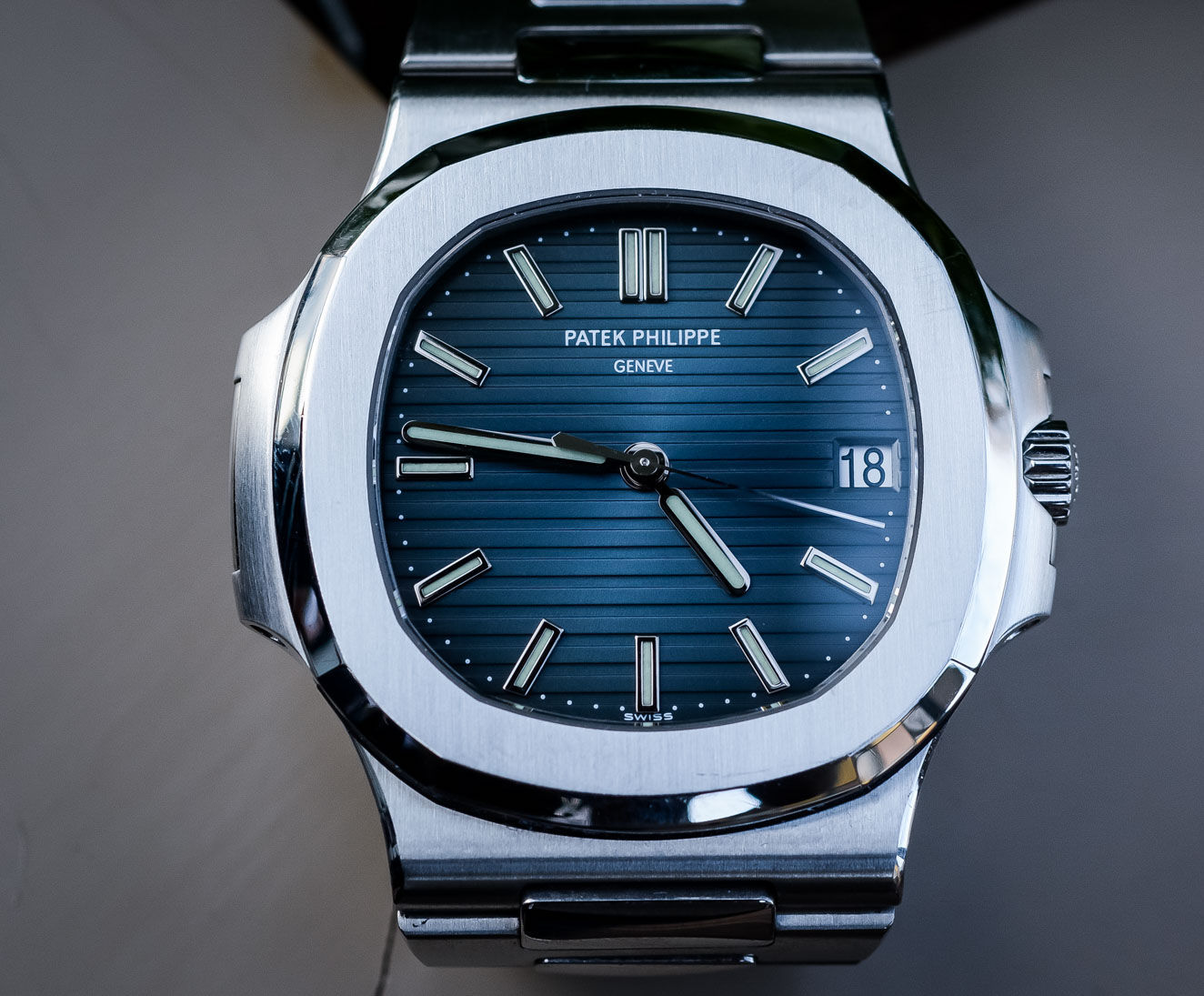

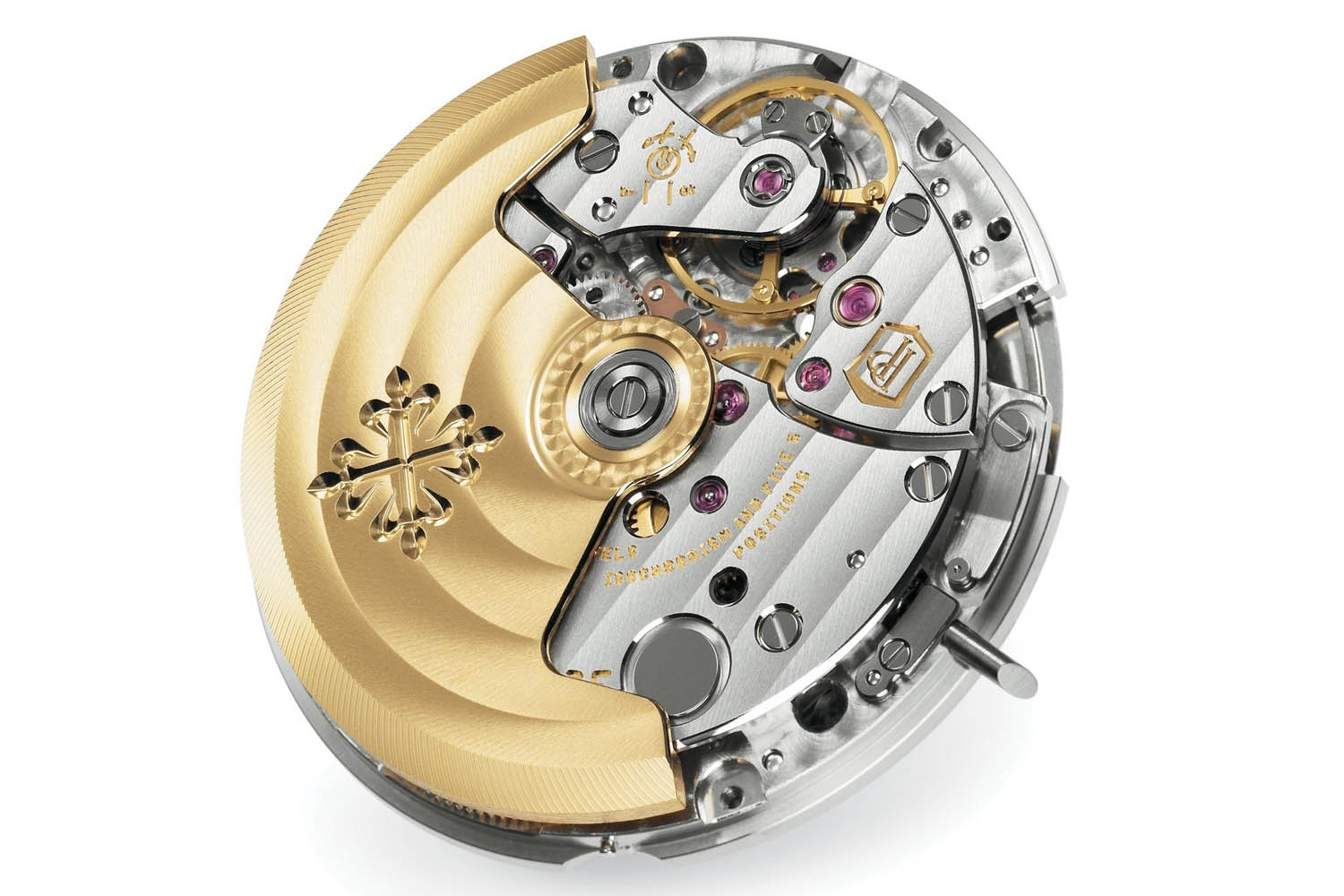
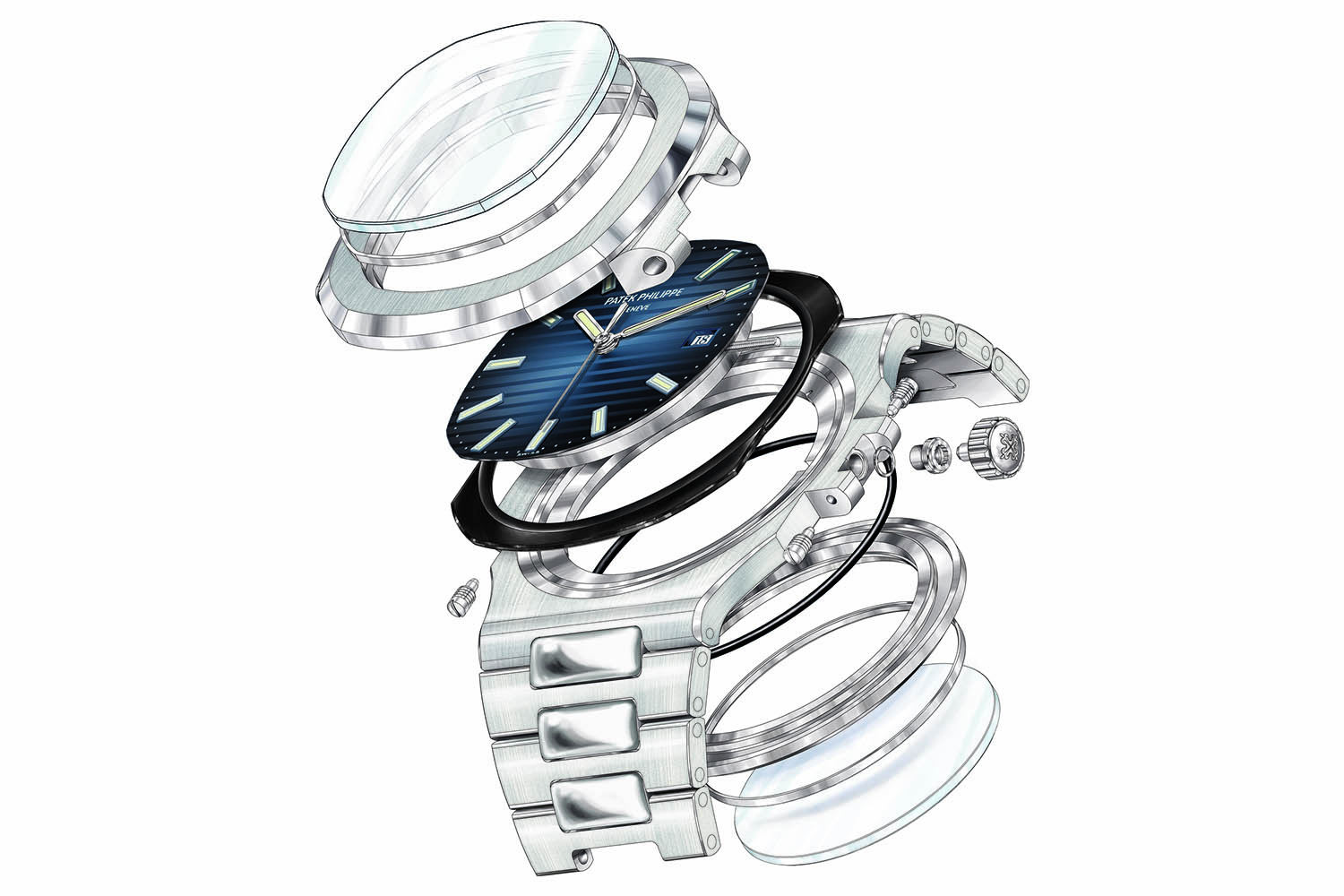
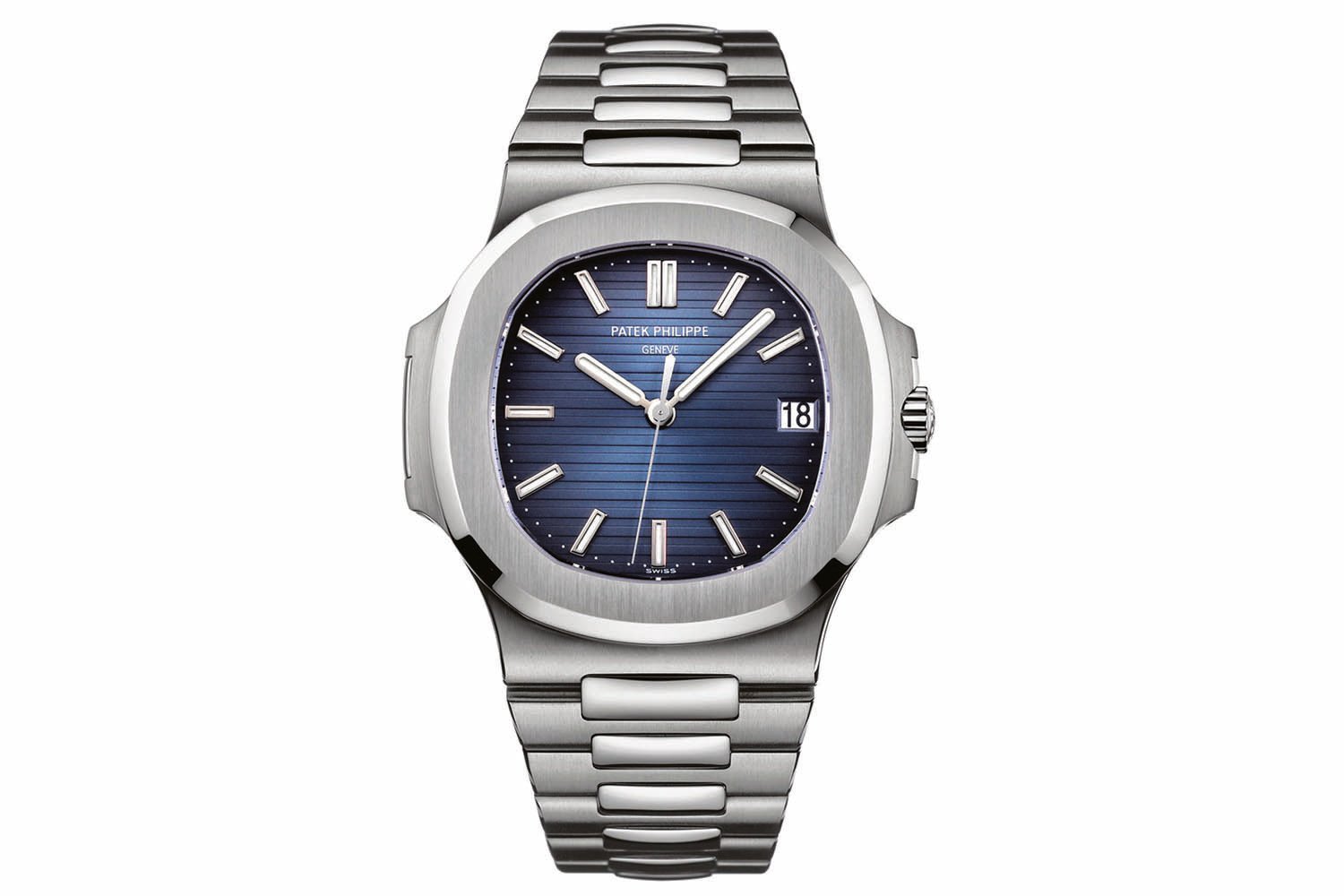
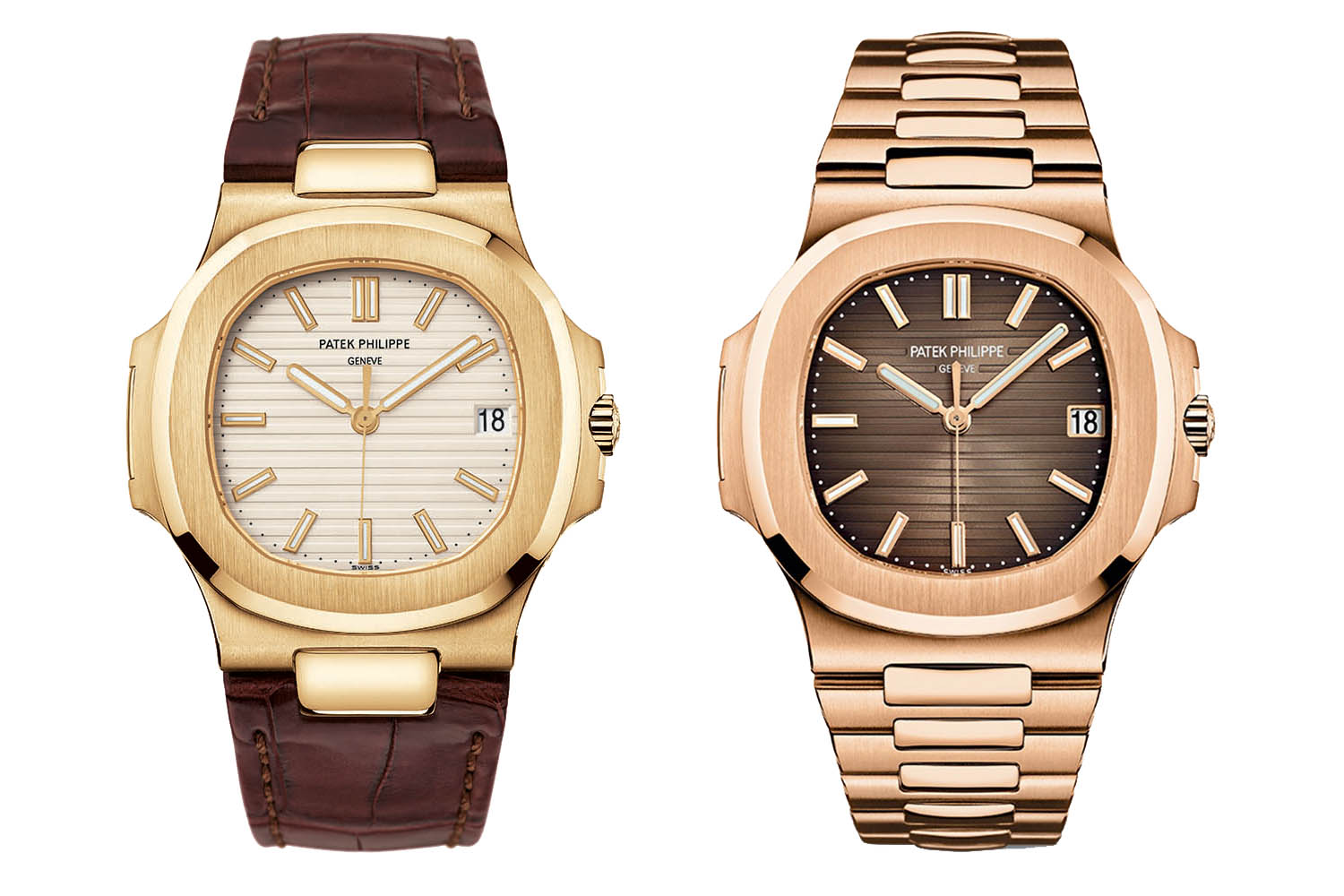

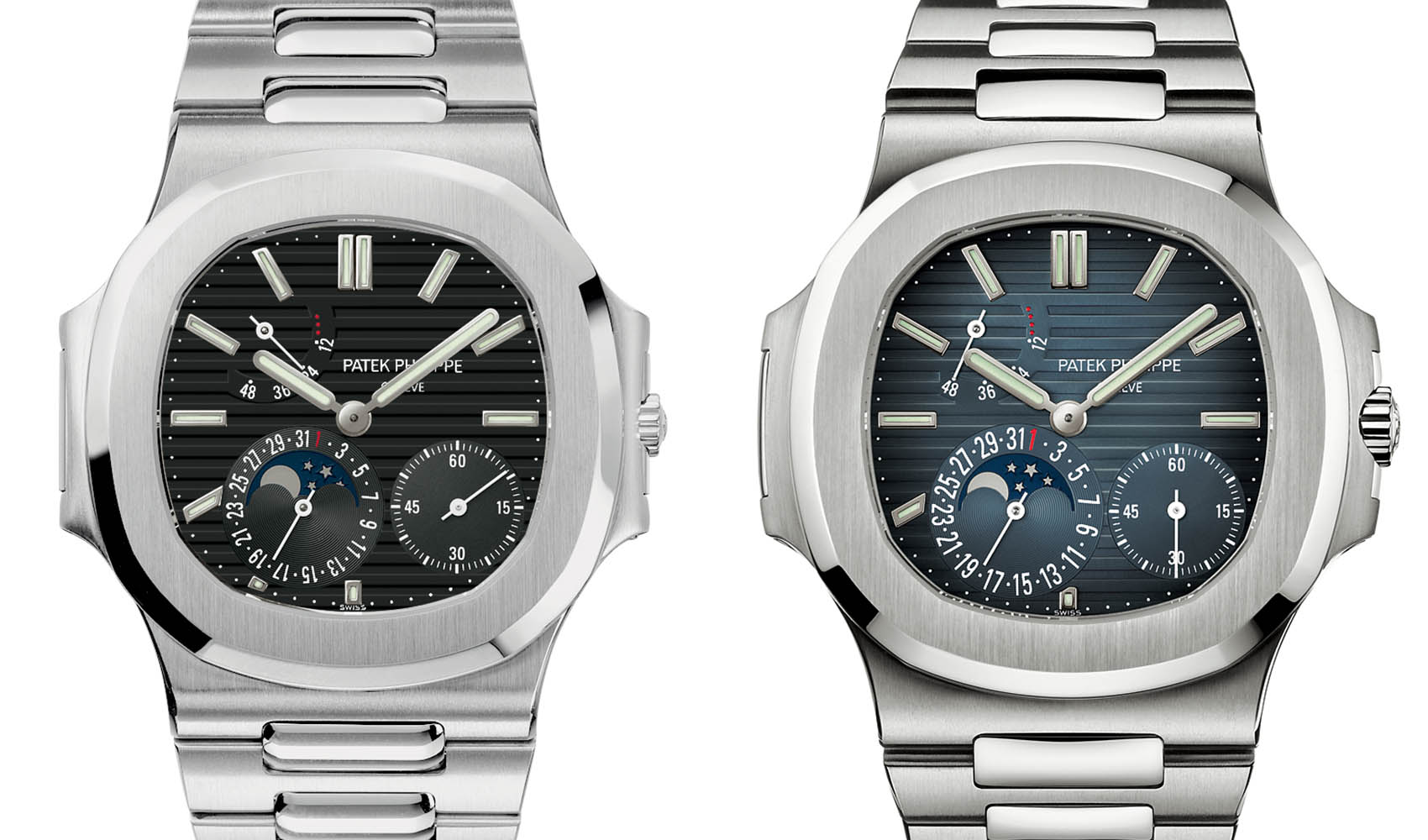
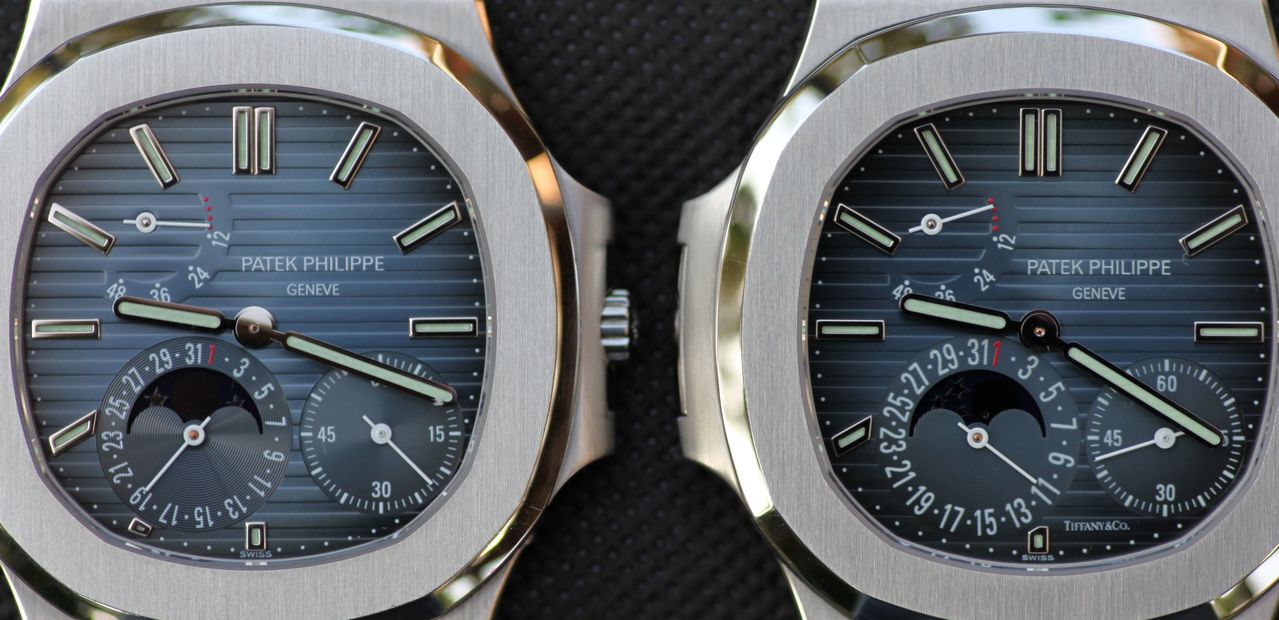
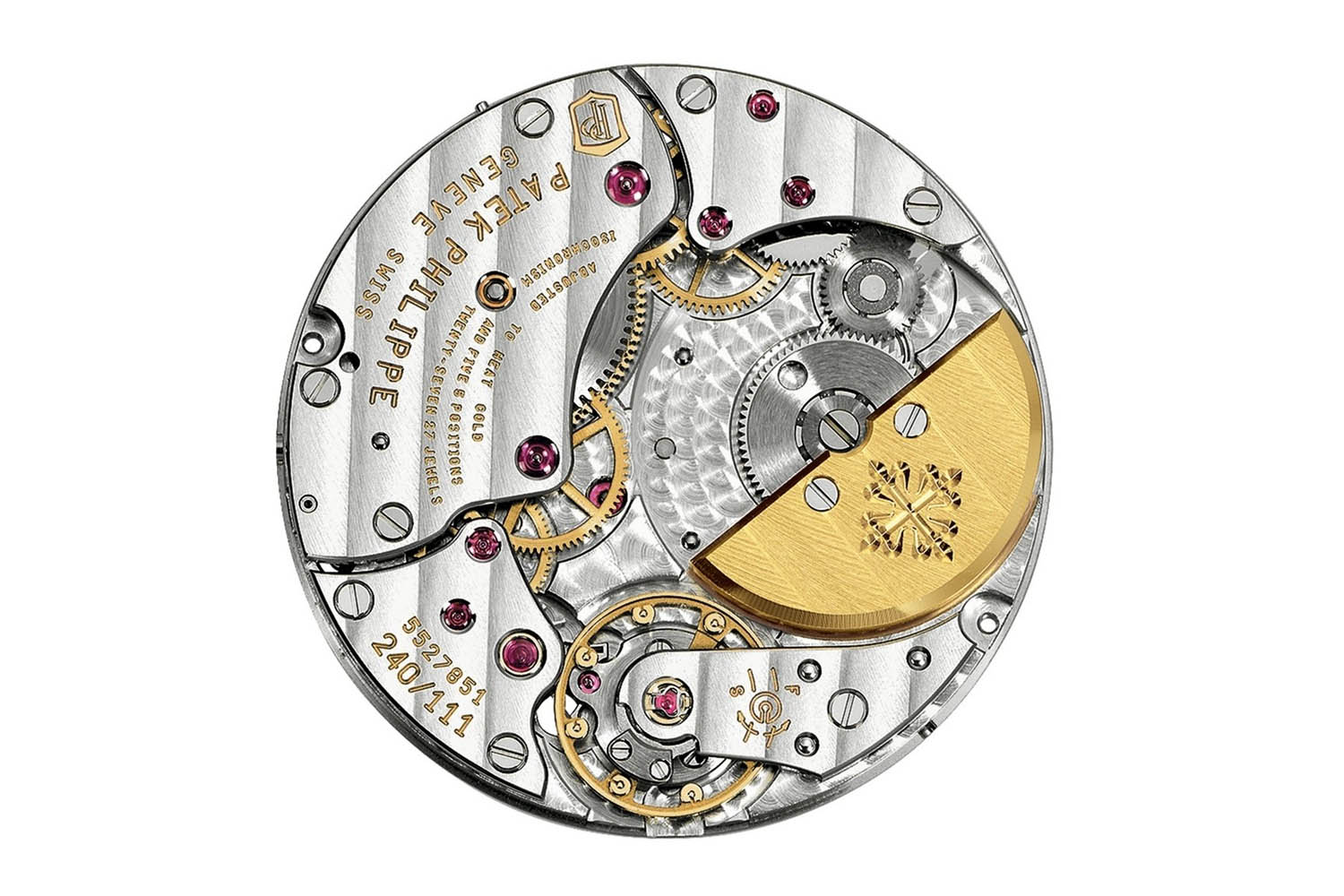
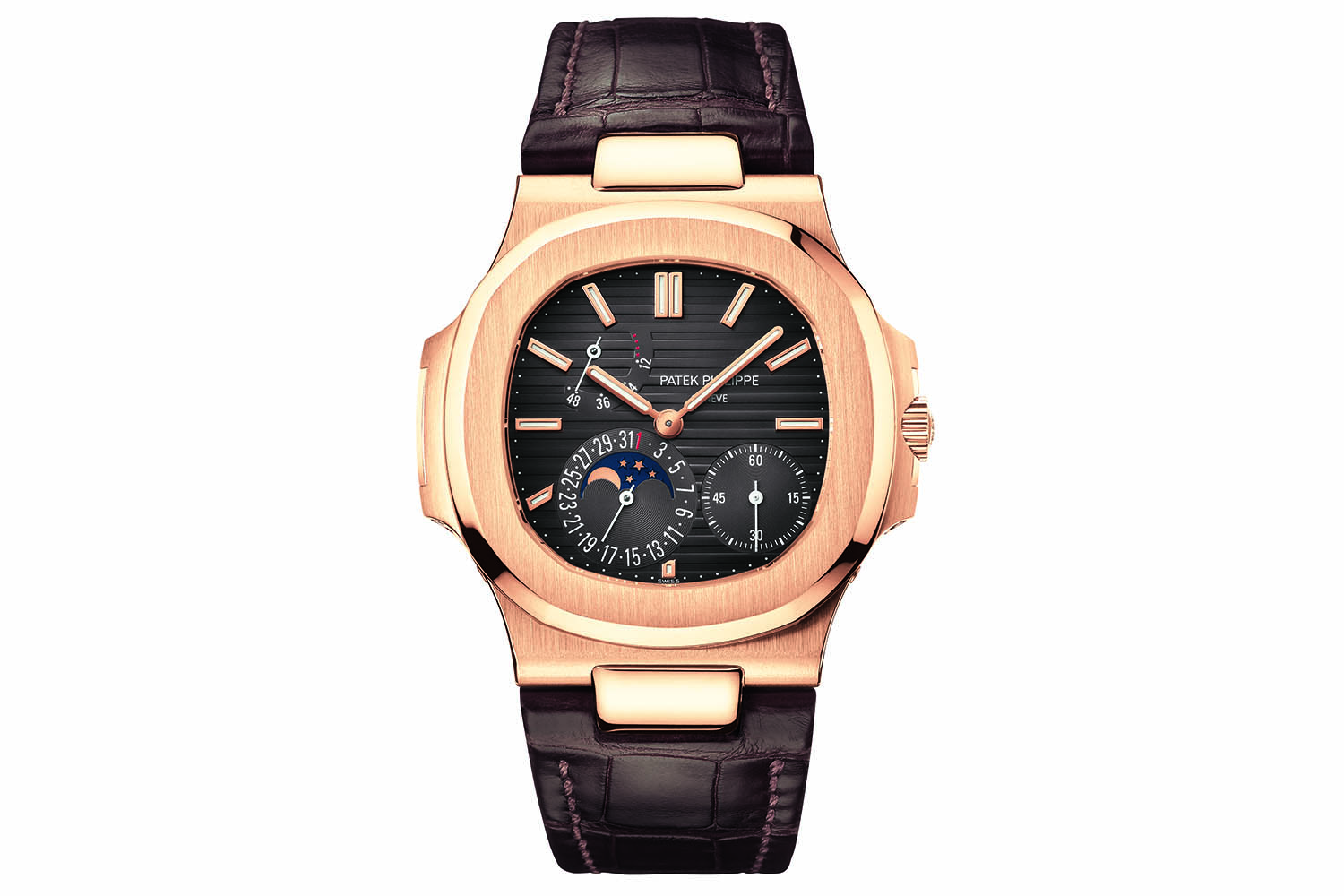
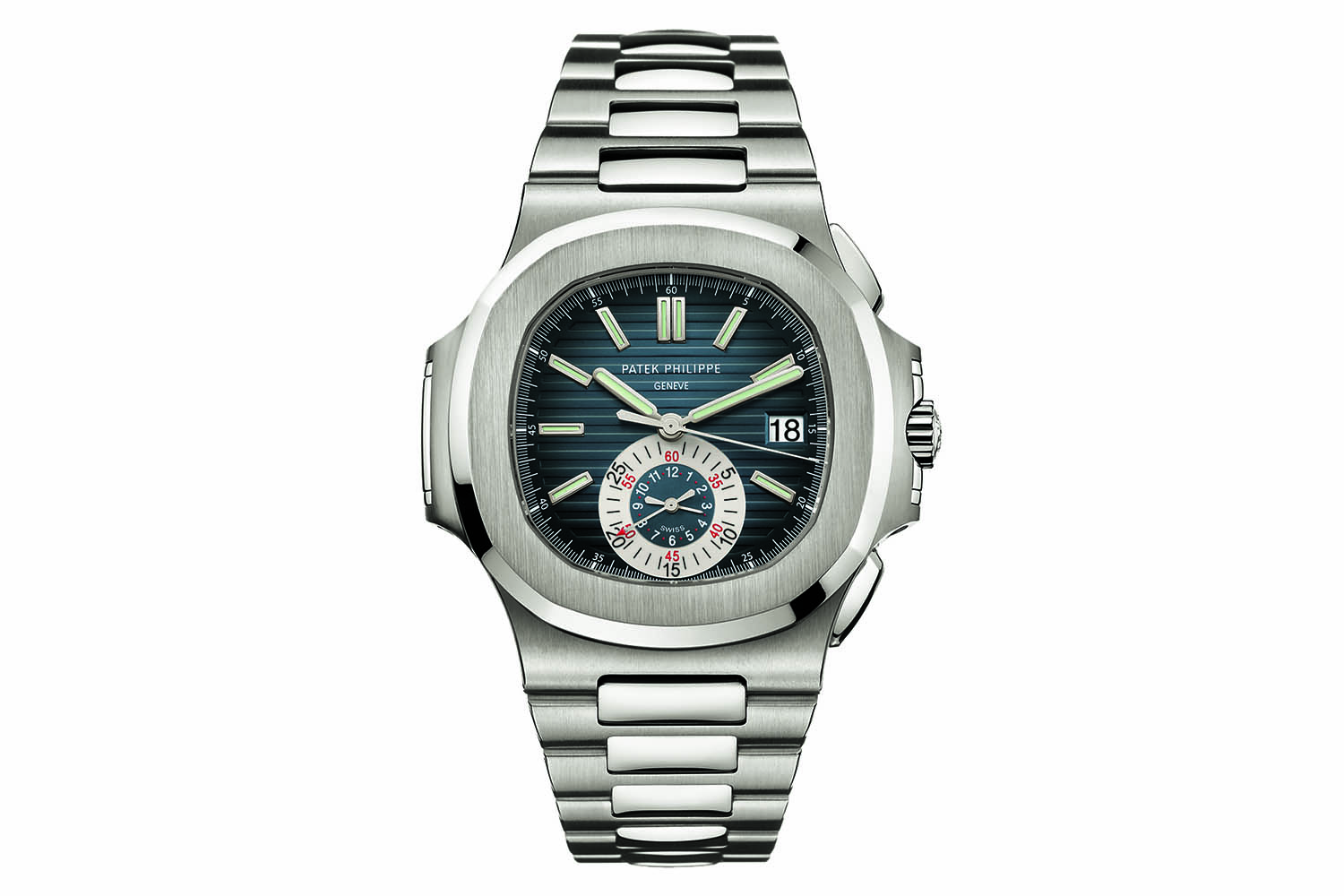

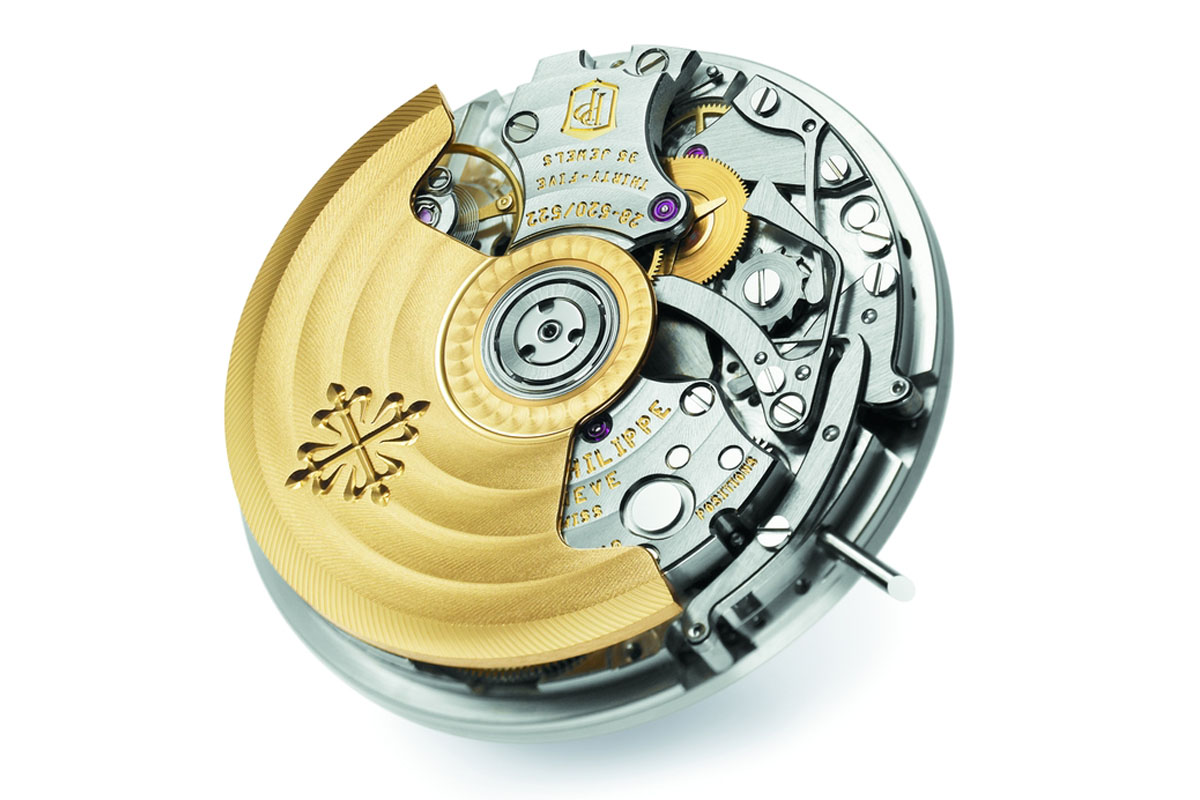
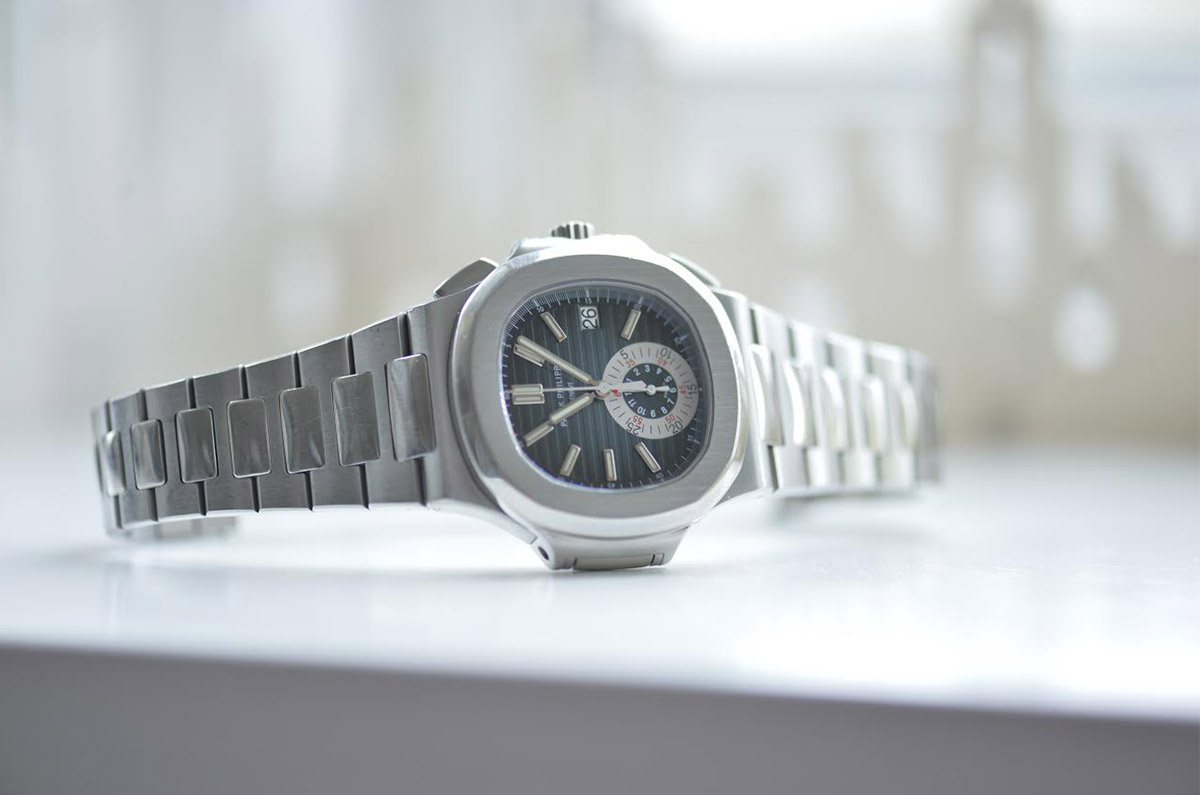
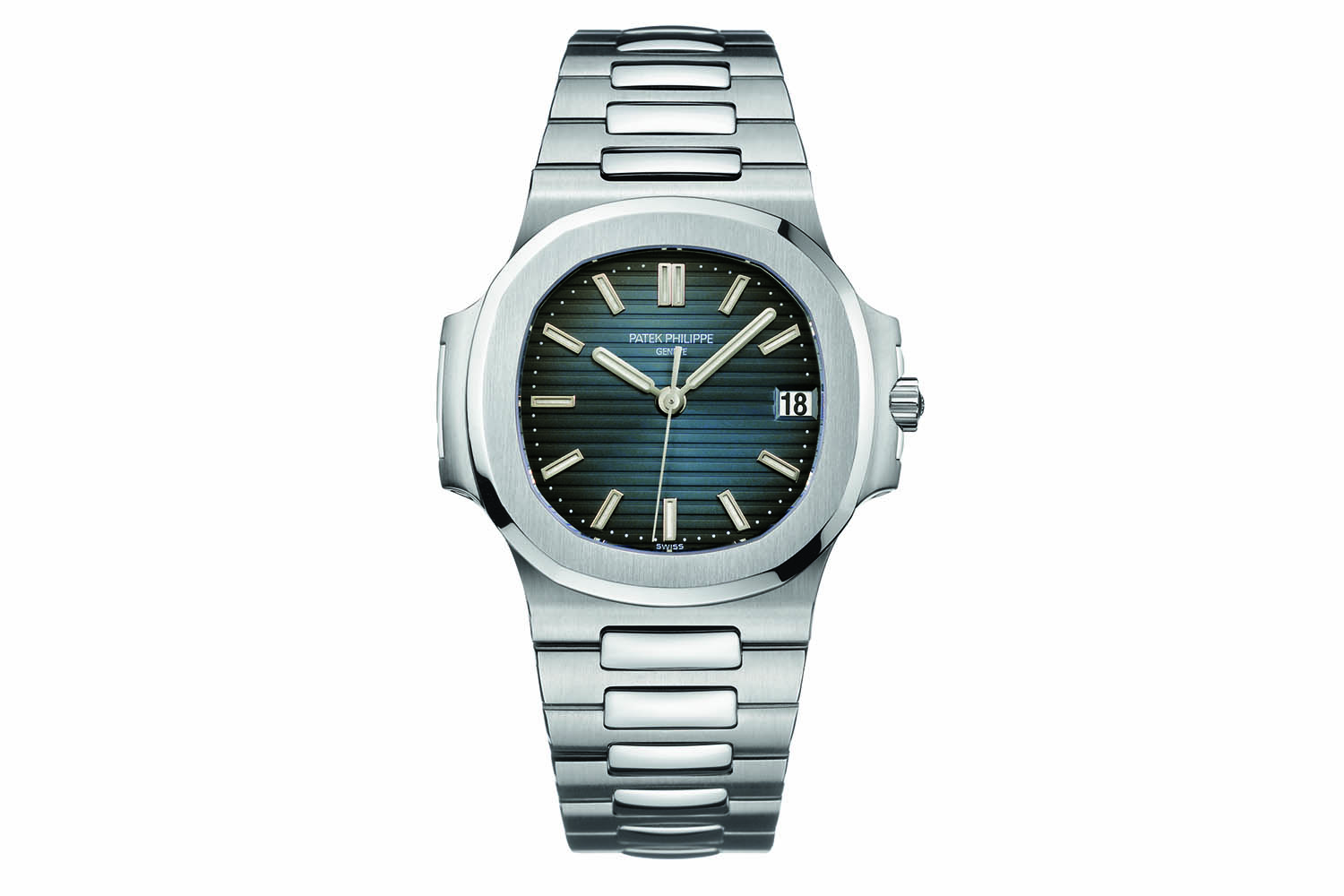
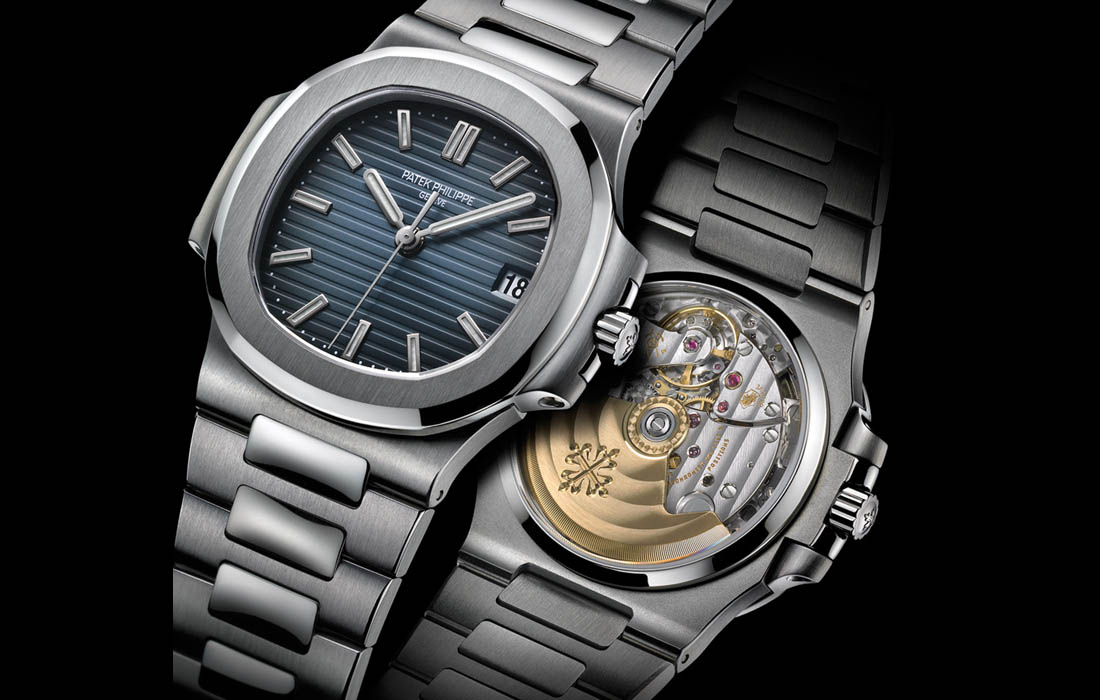
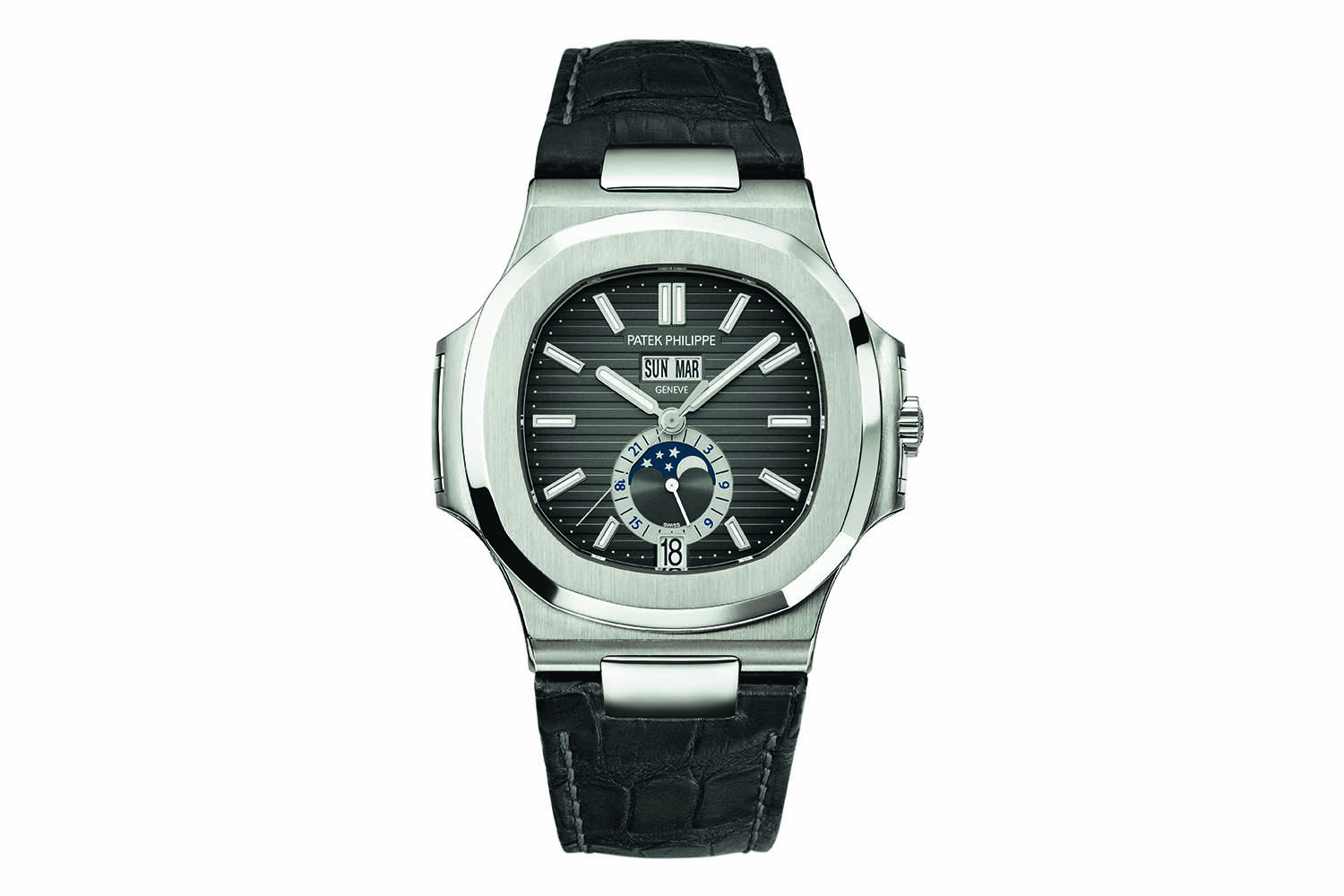
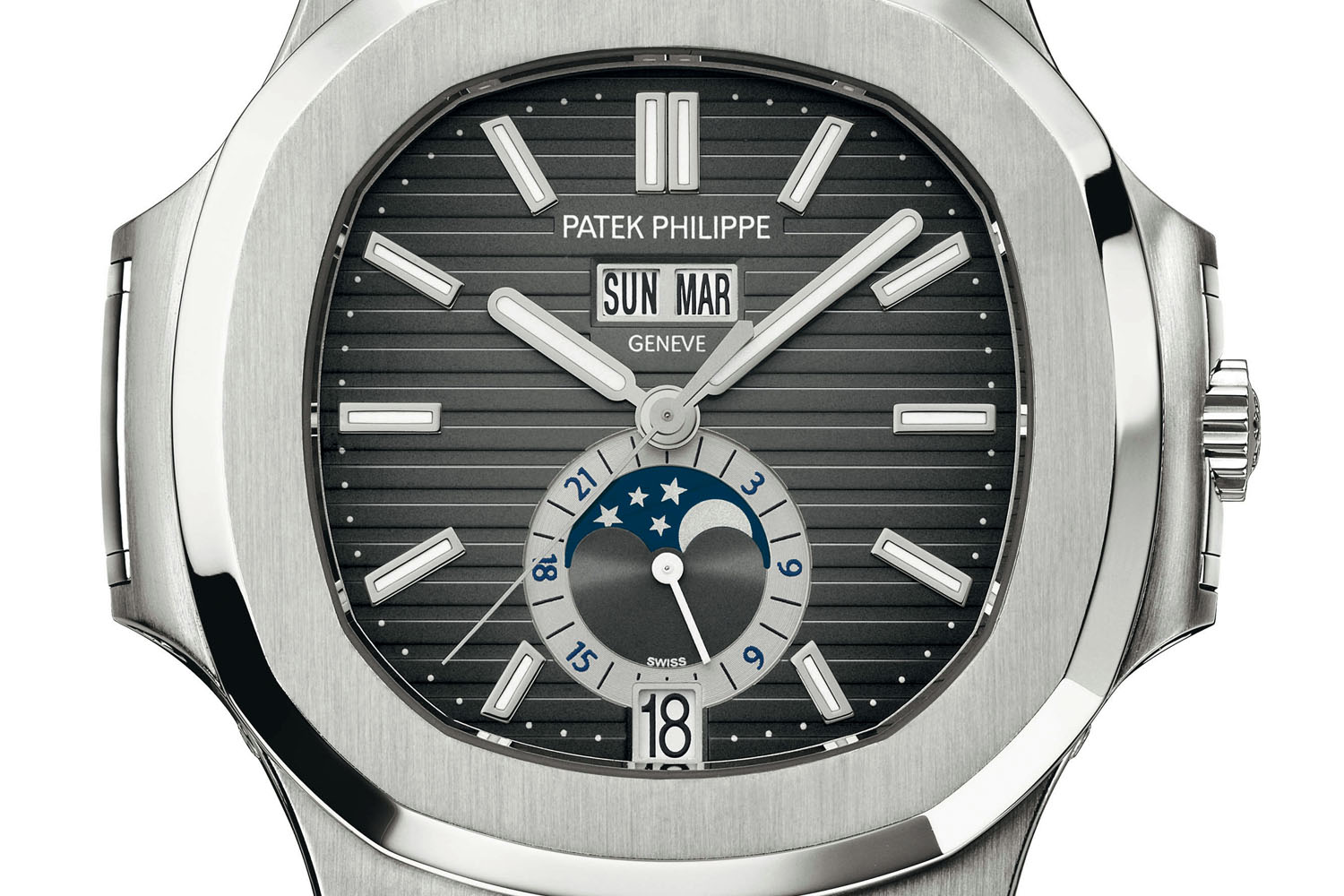
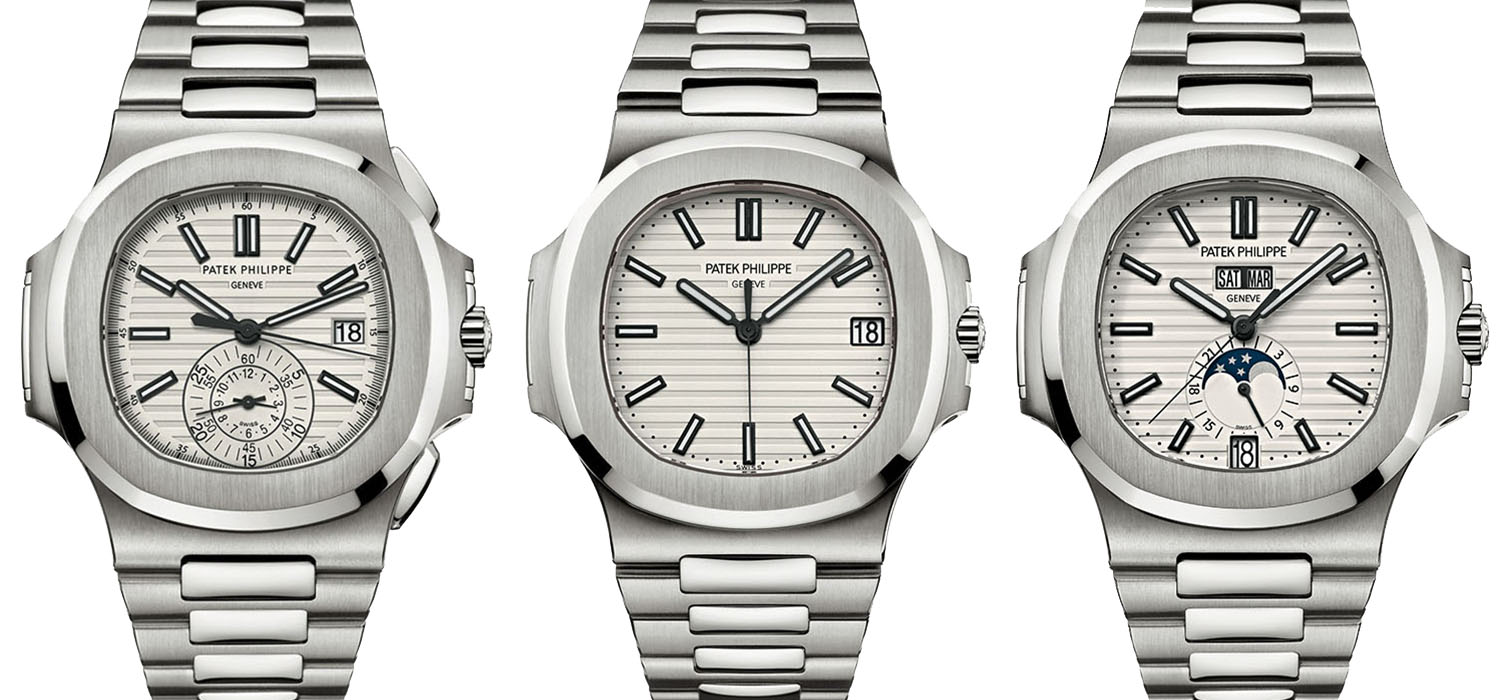
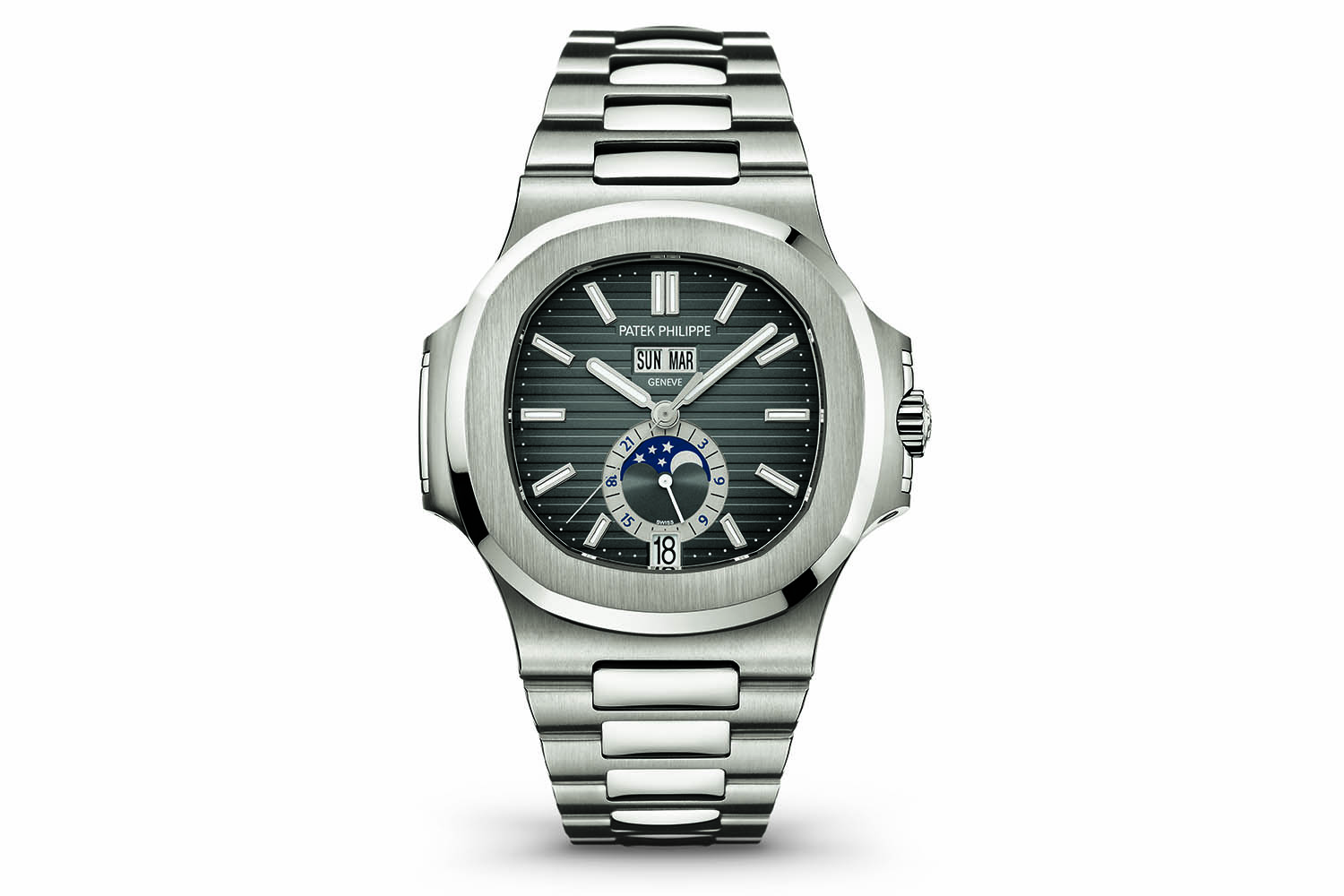
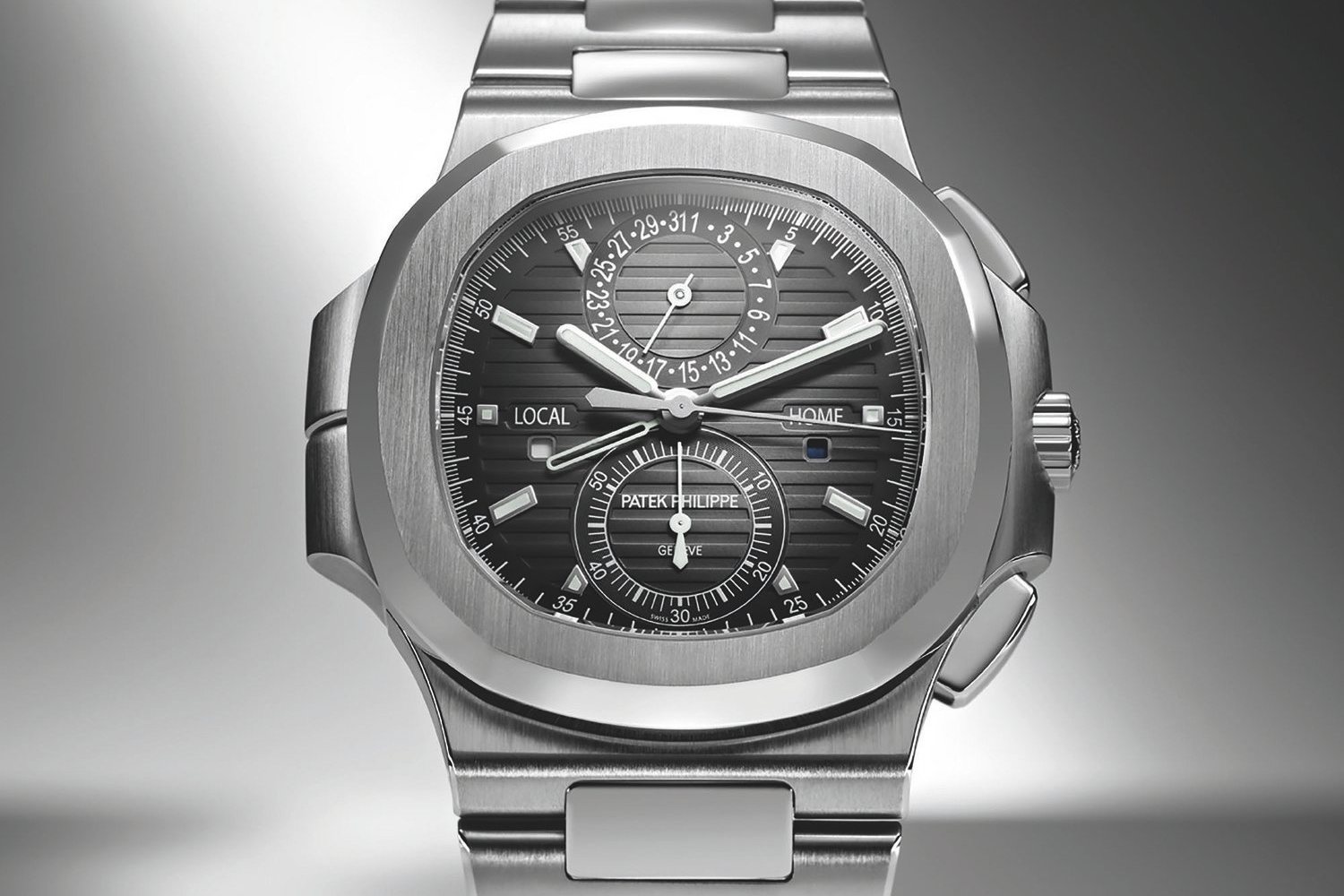
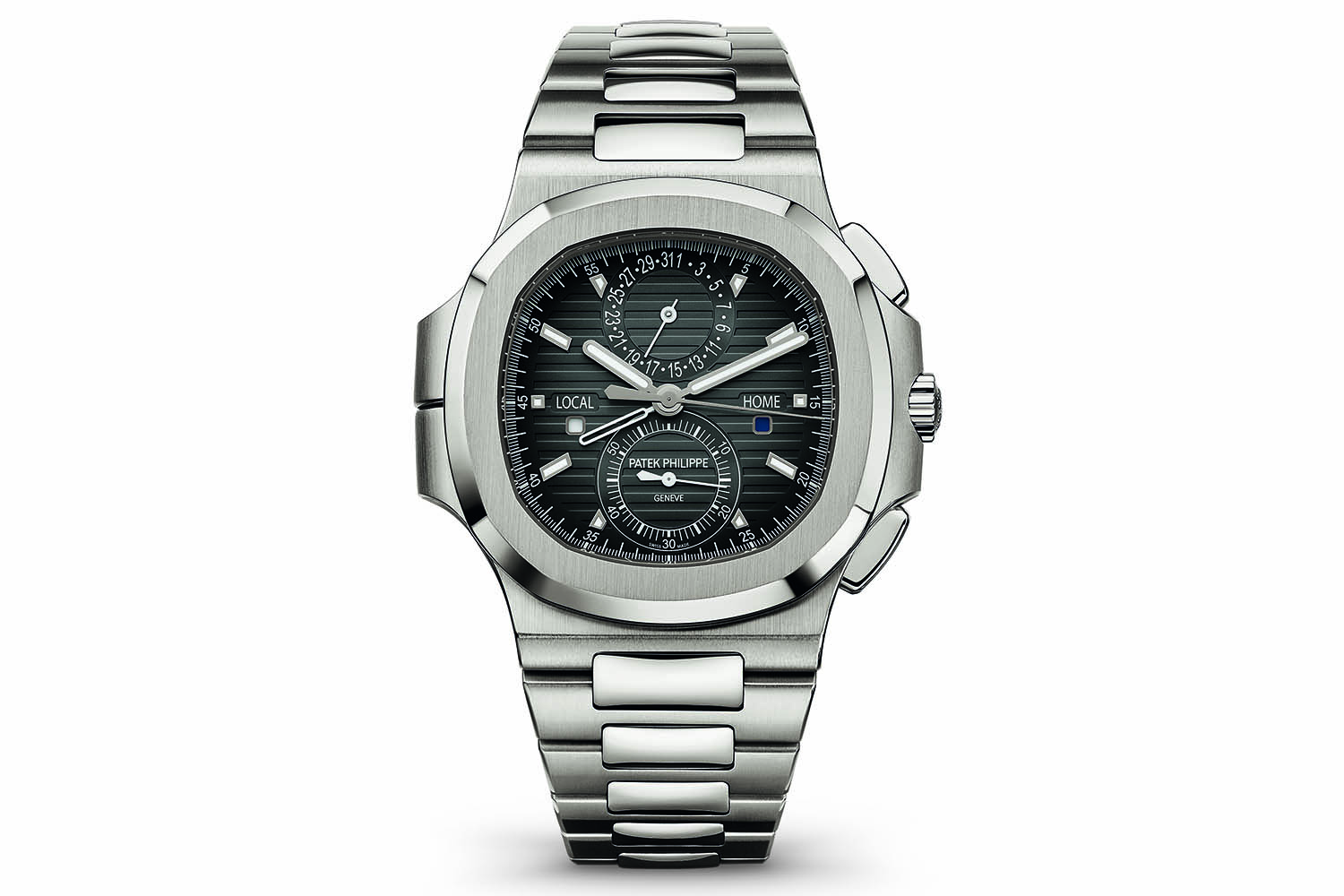

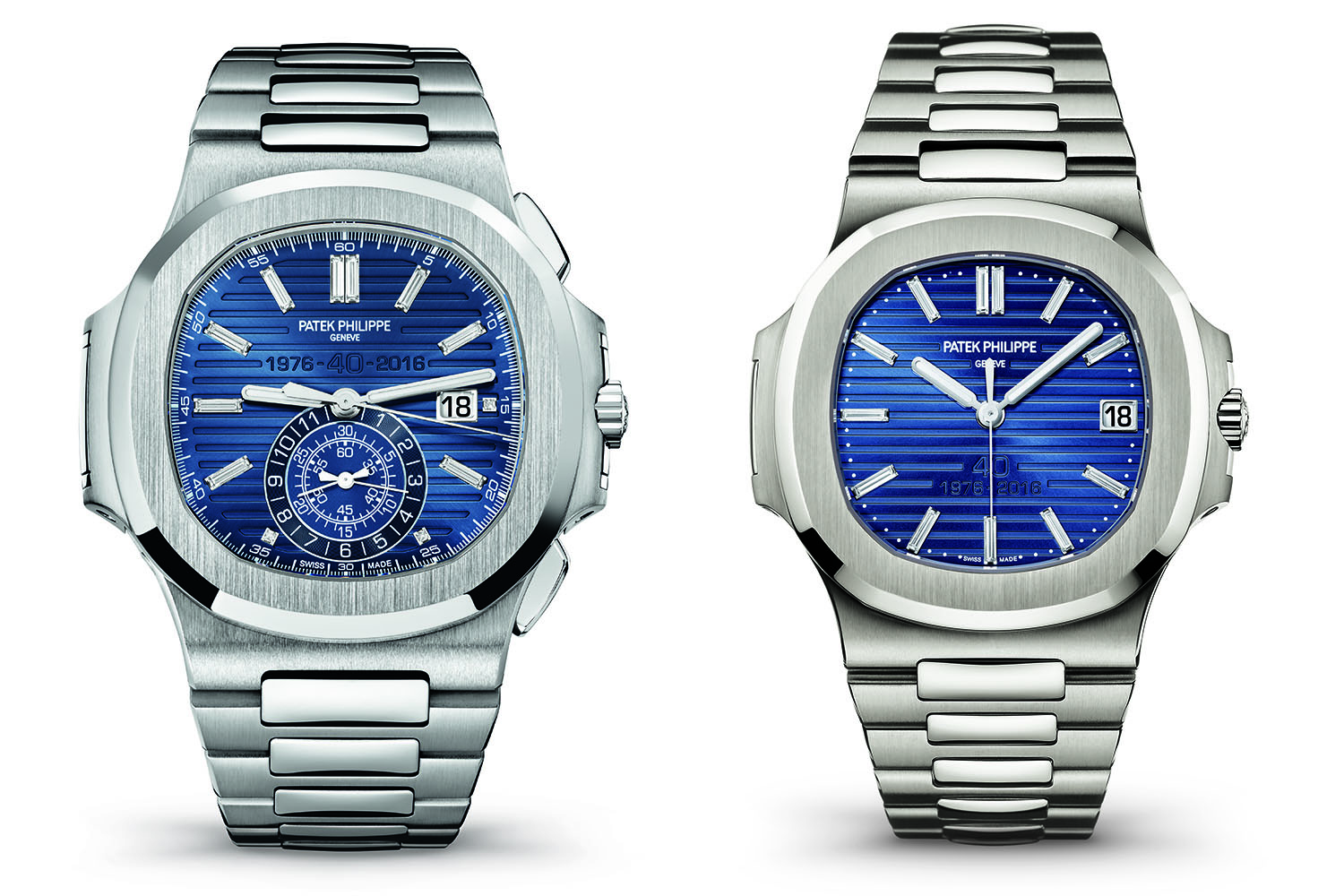
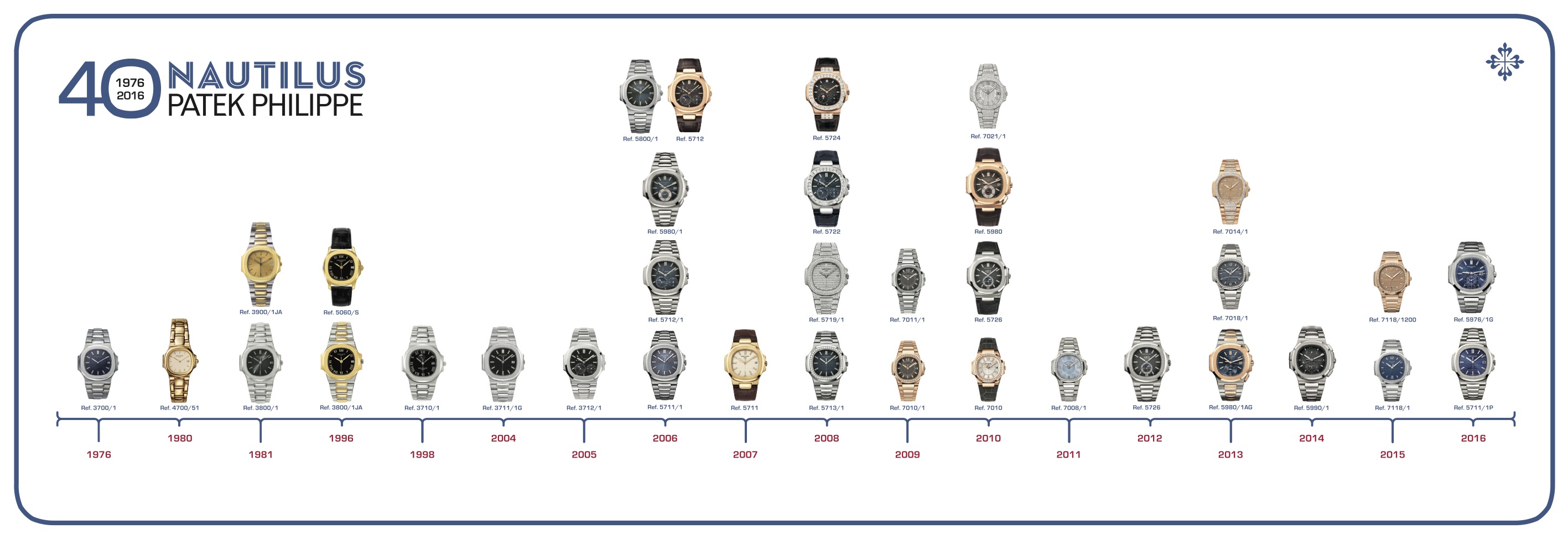



3 responses
Thanks, i really enjoyed reading this history, very complete and a keeper in my documents.
Indeed the 5800 was not a huge market success with a limited demand for automatic small sizes and a clear preference for quartz in that segment for ladies’ versions. The 5800 had one of the shortest commercial availability for a standard PP model, appearing only in 2006 and 2007 catalogs. Took me 6 months to find a brand-new one in 2010 after they sold out of all PP inventories worldwide.
The first 5711/1A series were fitted with a 315 SC caliber and not a 324. The 324 caliber appeared only in mid 2008.